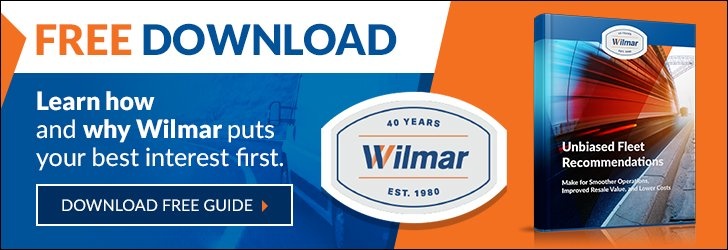The importance of measuring fleet utilization cannot be overlooked, even without access to advanced fleet technology. The practice enables businesses to optimize their operations and control costs. Fortunately, for enterprises lacking such resources, alternative methods prove equally effective.
Check out these tips to help you make data-driven decisions for your fleet management. But first. But first, let's discuss the importance of a fleet utilization strategy.
Why You Need to Implement a Fleet Utilization Strategy
Here's why you need to implement a fleet utilization strategy even without fleet technology:
- Cost efficiency: Tracking vehicle usage helps identify underutilized assets, reducing unnecessary expenses on maintenance, fuel, and insurance.
- Resource allocation: A utilization strategy enables you to allocate vehicles efficiently, ensuring optimal usage and avoiding overloading certain units.
- Productivity boost: Tracking utilization allows you to spot inefficiencies and streamline operations, increasing productivity.
- Data-driven decisions: Even without high-tech tools, basic usage data provides valuable insights, aiding informed decision-making.
- Competitive advantage: Efficient fleet utilization enhances customer service, giving you a competitive edge in the market.
- Reduced environmental impact: Optimized fleet usage reduces carbon emissions and promotes sustainability.
- Employee accountability: A utilization strategy promotes responsible behavior among staff.
How to Measure Fleet Utilization Without Fleet Technology
Read on to learn how to measure fleet utilization without technological help:
Establish Baseline Data
Establishing baseline data lays the foundation for measuring fleet utilization accurately. Begin by collecting essential information on mileage, fuel consumption, and maintenance records. To ensure reliable results, maintain consistency and regularity in data collection. Consistent data enable comparisons over time and identify trends that impact fleet utilization.
Conduct Regular Vehicle Inspections
Regular inspections enable you to proactively address maintenance needs, minimize downtime, and better fleet utilization. This proactive approach ensures the fleet remains in optimal condition and helps reduce the risk of unexpected breakdowns or costly repairs.
To efficiently assess your vehicles: thoroughly check tire condition to promote safety and fuel efficiency, monitor fluid levels to prevent unexpected breakdowns, and inspect for signs of wear and tear on vital components. By tracking changes over time, businesses can identify areas that need improvement and optimize fleet utilization.
Monitor Fuel Consumption
Without sophisticated fleet technology, manually taking account of fuel consumption can enhance your fleet management practices and streamline operations. This is because consistent monitoring of fuel use helps reduce operational costs and environmental impact, contributing to overall business efficiency.
Analyzing variations in fuel consumption patterns unveils potential issues like excessive idling or inefficient routes. Identifying such inefficiencies empowers businesses to make informed decisions and implement improvements to optimize fleet utilization.
Analyze Trip Logs and Driver Reports
Trip logs help determine the number of trips taken and distances each fleet vehicle covers. Driver reports, on the other hand, are instrumental in identifying route inefficiencies. By carefully examining these documents, businesses can pinpoint possible bottlenecks, unnecessary detours, and time-consuming practices that impact fleet utilization.
Evaluate Maintenance and Repair Records
Maintenance and repair records yield valuable data, such as the frequency and cost of repairs. Frequent breakdowns or high repair costs may indicate underutilized vehicles or inefficient practices. Low maintenance needs suggest that some vehicles are overutilized. Analyzing these patterns allows companies to make informed decisions, optimize fleet performance, and reduce operational costs.
Engage Employees for Improved Utilization
Encourage open communication channels where employees can freely share their observations, challenges, and suggestions regarding fleet utilization. Because they are on the front lines and have firsthand knowledge of the fleet's day-to-day operations, doing so enables you to gain information on vehicle usage and identify areas for potential improvements.
Empowering employees in decision-making processes empowers them to take ownership of their roles in optimizing fleet efficiency. It fosters a culture of responsibility and accountability where everyone participates in the company's growth.
Take Action: Implement a Fleet Utilization Strategy
For customized fleet solutions that optimize your business operations, contact us at Wilmar. Unlock the full potential of your fleet and operate your business more efficiently with our expertise.









